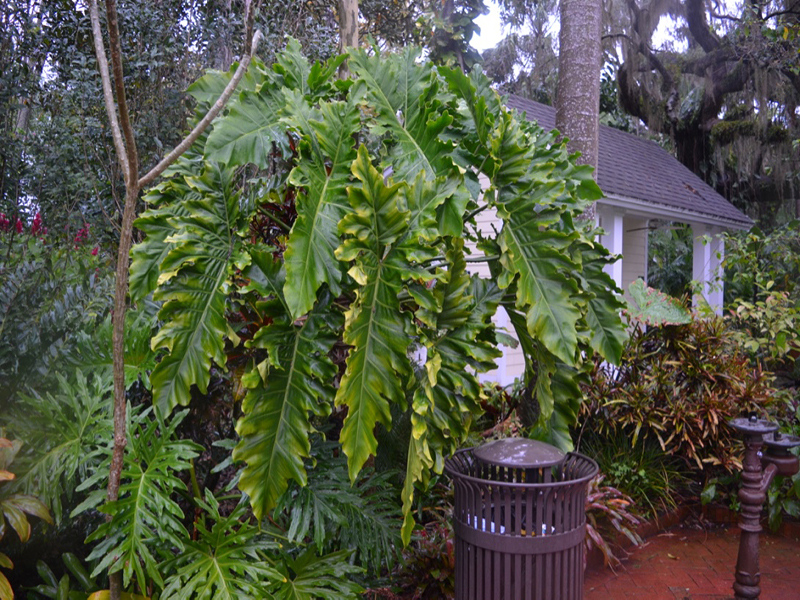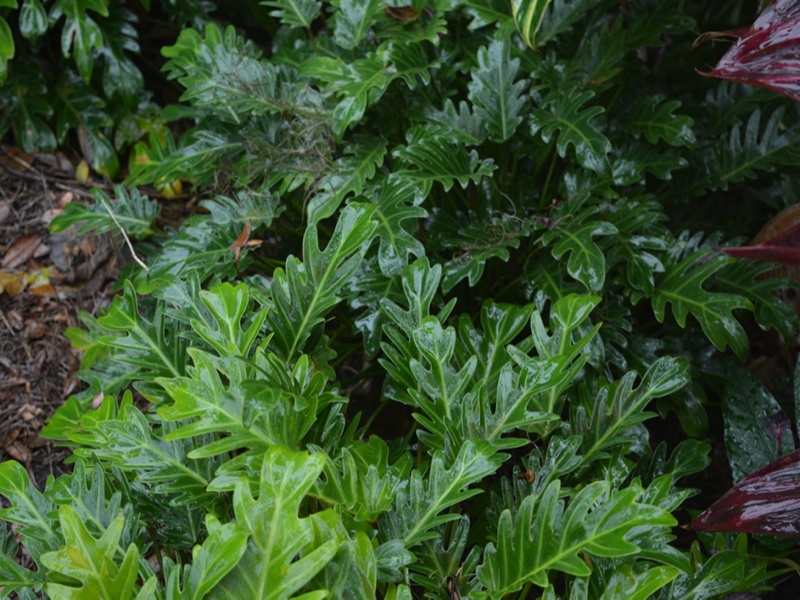
Philodendron > Philodendron
Philodendron
Philodendron
| Family |
| Araceae |
| Genus |
| Philodendron |
| USDA Hardiness Zone |
| 9 - 11 |
| Canadian Hardiness Zone |
| Requires cold season protection under glass. |
| RHS Hardiness Zone |
| H4 - H1c |
| Height |
| 3 - 4.5 m |
Photographs
Description and Growing Information
Flowering Period
| General Description |
| A large, non-climbing, semi-woody shrub. |
| Landscape |
| Indoor plant. |
| Cultivation |
| Grow in moist, fertile, and well-drained soils in part shade. Avoid full direct sun which often causes the leaves to scorch. Best in sun dappled conditions or in part shade featuring morning sun and afternoon shade. |
| Shape |
| Loosely rambling and epiphytic in nature. |
| Growth |
| Fast |
| ID Characteristic |
| A tropical plant grown as a houseplant in temperate climates. |
| Pests |
| Aphids, spider mites, mealybugs and scale. Leaf spots may occur. Root rot in overly moist soils. |
| Bark/Stem Description |
| In its native habitat, it will mature to 4.5 m tall with a trunk-like stem to 15 cm in diameter, but as an indoor container plant will typically grow much smaller. |
| Leaf Description |
| Huge, glossy, wavy-margined, deeply-dissected evergreen leaves to 1 m long. |
| Flower Description |
| White flowers bloom in an upright spadix which is enclosed by a purplish red spathe. |
| Propagation |
| Stem cuttings. |
| Ethnobotanical Uses (Disclaimer) |
| All parts of the plant are toxic. When eaten, intense burning and swelling of the lips, tongue, and throat, as well as difficulty speaking. Nausea, vomiting, and diarrhea may also occur. Frequent contact with sap may cause skin irritation. |

